Table of contents
Spelt, raw ( Triticum aestivum ssp. spelta), although neglected for a long time, has experienced a resurgence since the 1980s - especially in organic farming ( bio). Due to its origin, it is similar to spelt ( Fesen, Vesen, Schwabenkorn) known grain after wheat, but has a slightly nutty taste.
Spelt - Use in the kitchen:
The raw grain can be used in many different ways. Products made from it are available in a wide variety of versions and designs. Swabian grain is popular in the kitchen, especially for making bread and pastries. Baked goods made from light spelt flour (or wholemeal spelt flour) dry out more quickly and are not as dimensionally stable 3 or voluminous as products made from wheat flour ; however, the dough is softer and requires less baking time. In Upper Swabia in particular, people love Knauzenwecken and Swabian Seelen made from spelt flour. 1
Cooked spelt grains are suitable as a side dish to pan-fried vegetables, steamed vegetables, soups or salads.
Eating spelt raw / eating spelt grains raw: Can you eat spelt raw? Eating spelt grains raw is not recommended as they are too hard. For muesli, sweet or savoury dishes, you should soak the grains in water for a few hours (or overnight) beforehand or let them germinate (raw food). However, you can eat spelt flakes raw. The half-ripe grain, also known as green spelt, is often used as green spelt meal in soups, risotto or as patties. It is harvested before it is ripe and then roasted or dried, which is why it can no longer be classified as raw. Drying is traditionally done using a drying pan over a beech wood fire or in hot air systems (see green spelt meal).
Spelt flakes (bought usually not raw, as they are heated) or spelt groats (coarsely chopped grain, usually raw) are used in muesli, in sweet dishes or to thicken soups and sauces. With a flake mill, you can make your own raw spelt flakes from whole spelt grains, which are ideal for whole-food recipes. To do this, soak the grain briefly before crushing it. 4 Spelt flakes are firmer than oat flakes, taste nuttier and are lower in fat.
Other spelt products such as spelt semolina or spelt rice are also usually raw. For spelt semolina (organic), the grain is ground and sieved (see semolina), while spelt rice is peeled, slightly ground spelt (i.e. without outer layers). It is often also referred to as pearl spelt (similar to pearl barley or rolled barley). It can be used like rice. Regional spelt rice is more climate-friendly and ecological than white rice. 7 If you grind the whole spelt grain into flour, you get wholemeal spelt flour. Spelt bulgur, on the other hand, is partially peeled, pre-cooked or steamed, dried and chopped spelt and is therefore no longer raw. 8
Spelt can be used to make spelt coffee. This is a caffeine-free drink made from malted, roasted and ground Swabian grain. Depending on the manufacturing process, the product is available as an instant drink or for brewing, like coffee made from coffee beans. Spelt milk and spelt drinks are also available. These usually consist of ground, soaked spelt grains, water and, depending on the manufacturer, added vitamins and sweeteners.
Vegan recipe for spelt muesli with spelt flakes:
Ingredients (for 2 people): 4 tablespoons spelt flakes (organic), 1 apple, 1 banana, 1 tablespoon walnuts, 1 tablespoon sweetener (e.g. agave syrup, optional), 1 cup plant-based yoghurt (e.g. soy yoghurt, vegan).
Preparation: Put the spelt flakes and yoghurt in a bowl and stir together. Leave the mixture to stand for about 20 minutes. Cut the apple and banana into small pieces and add both to the yoghurt-spelt mixture with the nuts and sweetener. If you crush the whole spelt grains (raw) yourself, you can be sure that the flakes are still raw.
Vegan spelt milk from Schwabenkorn:
Ingredients: 80-100 g spelt grains (raw), water for soaking and 1 L water, optionally honey or 1 ripe banana.
Preparation: The grains must be soaked in water for at least 12 hours before preparation. Then pour off the water and mix the spelt grains in a high-performance blender with a litre of fresh water and honey/banana. Then strain the liquid through a fine sieve or cotton cloth and pour it into a clean bottle.
For a refreshing spelt drink (vegan), mix a cup of spelt milk with some crushed ice, 1 teaspoon of agave syrup and 2 teaspoons of unsweetened cocoa powder.
Vegan recipes with spelt can be found under the note: " Recipes that have the most of this ingredient ".
| Not only vegans or vegetarians should read this: Vegans often eat unhealthily. Avoidable nutritional errors. |
Shopping - where to buy spelt?
You can find wheat and spelt products at major retailers such as Coop, Migros, Denner, Volg, Spar, Aldi, Lidl, Rewe, Edeka and Hofer all year round, also in organic quality (bio). The loose grain and many spelt products are also available in organic shops, organic supermarkets (e.g. Alnatura or Denn's Biomarkt), Health food stores, online shops and sometimes at weekly markets. If you buy in organic shops, the grain is usually well cleaned, dried and packaged - and therefore better prepared for longer storage. 9 Fesen is vegan and you can buy the grains raw (raw food). In many products, the Vesen is contained in processed form and is therefore no longer raw or no longer capable of germinating (eg green spelt meal, milled spelt, etc.).
Your own preparation:
Cooking spelt: To cook raw spelt, the water method (cook with more water and throw away the excess) is better than the soaking method. The grains should be rinsed well and soaked in enough water (approx. 2 cm more than spelt grains) in the refrigerator for between 8 and 16 hours (or overnight). This can reduce the cooking time. After soaking, rinse the spelt grains well again and cook in 3 to 4 times the amount of water. After approx. 10 minutes, you can reduce the heat a little and then let the grains cook covered for 40-50 minutes at a lower heat. The cooking time varies depending on the type of spelt and taste. If you want a firmer texture, cooking time of approx. 30 minutes is sufficient; for a softer consistency, cook the Swabian grains for approx. 60 minutes. Pour off the remaining water and use the Vesen as desired.
Germinate spelt: Spelt grains (raw) are germinated in a germination jar, a germination device or a sprouting tower (sprout cultivation). Cleanliness is very important when germinating, which is why all equipment and the seeds must be thoroughly washed. Then soak the grains in water for around 12 hours. If you use a germination jar, you can soak them directly in it. After soaking, rinse the grains twice and pour off the water. By tilting the germination jar, you can ensure that the water drains off completely and that no waterlogging occurs. Now the grains should be rinsed 2 to 3 times a day. The germination jar should be in a bright room, but not in direct sunlight. The first fibrous roots form after 1-2 days (depending on the seed). After 3-4 days, the spelt seedlings are ready to harvest. If small stems with leaves form, these are called sprouts. The sprouts and germs are raw food. You can enjoy them in salads, for example. 10
Spelt rice or pearl spelt (spelt, milled) does not need to be soaked. It requires less cooking time (20-30 minutes) and is no longer capable of germinating.
Storage of spelt:
Storage and shelf life vary depending on the type of spelt product. If well sealed, the fully ripe, raw grain can be stored for up to ten years (green spelt much less). At a humidity of less than 12%, the storage period can be up to 20 years. Even after this time, the grains can still be used as seed. 9 It is advantageous to store them in a dry, dark and odor-free place. Various types of grain, including Swabian grain, are recommended as a crisis precaution due to their good storage properties.
Ingredients - nutritional values - calories:
With 338 kcal per 100 g, this amount of spelt covers 16.9% of the daily requirement. In addition, consuming 100 g of spelt grains provides 29.1% of the daily requirement of protein (15 g/100g). Dietary fiber is represented at 11 g/100g (42.8% of the daily requirement) in a similar way to wheat (12 g/100g). 12
Spelt grain is characterized by its niacin (vitamin B3) content. Fesen contains 6.8 mg/100g of the vitamin. More niacin is present in raw wheat bran (14 mg/100g), less in raw rice noodles (0.22 mg/100g). 12
The two essential amino acids lysine and threonine are also particularly noteworthy. Lysine is found in Schwabenkorn at 0.41 g/100g, similar to wholemeal wheat flour (0.36 g/100g). The leader in lysine content is brewer's yeast at 3.7 g/100g, less is found in psyllium husks (0.05 g/100g). 12
In terms of threonine content (0.44 g/100g and 48% of the daily requirement), spelt grain is comparable to fresh baker's yeast (0.44 g/100g). Brewer's yeast (2.7 g/100g) andactive dry yeast with 2 g are also at the top of the list. Less threonine can be found in raw wholegrain rice (0.28 g/100g). 12
The complete ingredients and nutrients of spelt (raw), the coverage of the daily requirement and comparison values with other ingredients can be found in our nutrient tables. In the article Nutrients explained you will get a detailed insight into the topic.
Health aspects - effects:
If you have a pure wheat allergy, spelt grains are generally well tolerated. Spelt grains mostly lack a certain gliadin (omega-5 gliadin), which is responsible for the intolerance in wheat. 5,6 People with stomach problems also describe the grain as easier to digest and more wholesome than wheat. Spelt is also a better source of bioactive compounds (such as selenium, folate, phytosterols and alkylresorcinols). No other positive health effects have been proven to date. 13
In the outer layers of spelt grain (as in other types of grain or pulses), secondary plant substances such as phytic acid are found. Phytic acid is said to have an antioxidant effect, but it is also said to bind minerals that are then no longer available to the body 14 (more on this in the article Phytic acid). Phytic acid can be reduced by soaking or germinating the unprocessed, raw grains. When soaking, a soaking time of 12 hours and a germination period of 3-4 days are assumed. Spelt grain is particularly suitable for eating raw after germination.
Dangers - intolerances - side effects:
Despite the generally good tolerance, spelt grains are not an alternative for people who suffer from celiac disease: They contain a lot of gluten 3,13,15 - but in a different protein composition to wheat. 5,6 You can find out more about gluten proteins, celiac disease and wheat intolerance in the articles on wholemeal spelt flour and soft wheat semolina.
Folk medicine - natural medicine:
Hildegard von Bingen describes the non-crossed "original spelt" as being positive all around. It is said to ensure good digestion, increase performance and concentration as well as general well-being. The grain is also said to strengthen the immune system. It is considered a staple food for gastrointestinal diseases and metabolic disorders. It is not important in what form you want to eat spelt. 16 Spelt is also an important resource in traditional Chinese medicine : it is said to strengthen the middle and is well tolerated. 17
Occurrence - origin - ecology:
In Central Europe, spelt was cultivated 7,000 years ago. 18 There are two theories about the origin of the grain: One theory states that there is no uniform origin of spelt, but that a distinction is made between European and Asian spelt. European spelt is said to have come about through a spontaneous cross between a tetraploid wheat variety (e.g. emmer) and a free-threshing hexaploid wheat (dwarf wheat, Triticum compactum). 20 Tetraploid means that the grain has four sets of chromosomes, while hexaploid means that the grain has six sets of chromosomes. 21 The other theory states that Swabian grain came about through a cross between cultivated emmer ( Triticum dicoccum) and wild grass ( Triticum tauschii) around the Caspian Sea. 20
The most important growing areas are in Germany (Baden-Württemberg, especially in the Swabian Alb, in Upper Swabia and in the Tauber region of Baden, which justifies the name Schwabenkorn) 26 in Switzerland, Austria, Belgium, Finland and Spain.
Growing spelt in the garden:
Swabian grain can also be grown in the garden. It should be remembered that in relation to the area under cultivation, only a comparatively small harvest can be obtained. For example, to supply one person with grain for a year, around 500-1,000 m 2 of cultivation area are required. To grow spelt, you first prepare the soil, then sow the grain in rows, press it down and mulch it. This way, the grains do not need any further care. As soon as the grains are hard, you cut the spelt ears with a scythe or sickle and dry them. Then you have to thresh and clean the spelt with a suitable device, e.g. a sieve. Now you can either grind the raw grain, press it or use it whole. 22
Cultivation - harvesting of Vesen:
The sowing dates for the Swabian grain are between mid-October and mid-November. 23 In extreme cases, December sowing is possible. In the crop rotation, Fesen is usually planted after root crops such as corn, potatoes or beets. 24 Spelt grain has the property of being particularly hardy and undemanding. 11.30 The harvest time is between the end of July and the end of August, depending on the year and altitude. 23 There are various types of spelt, but these require approval before they can be cultivated.
After harvesting, the raw grain is not immediately ready for sale or further processing. In contrast to naked wheat, for example, spelt grain is still enclosed in the husks after threshing. Husks are the bracts of grasses in the inflorescence. Most types of grain have husks: a distinction is made between whether the husks come off directly during threshing or are firmly attached to the grain (as with vesen). The types of grain einkorn, emmer, millet and rice (as well as barley and oats - provided they are not naked varieties) are also so-called husked grains. 2 These require a further processing step, rolling or tanning. This is done using two stones that separate the grain from the husks at the right distance and with the right structure. This mixture of husks and grains is then separated using a sieve and air streams. The grains are then ready for sale or further processing. 19 Compared to wheat processing, husking involves 30% more work, which is why prices are often higher. 18,28 During husking, some of the grains lose their ability to germinate (approx. 20%). 2
Ecological aspects:
For a long time, spelt cultivation experienced a sharp decline. This was also due to the low yields of spelt and the better breeding flexibility of wheat. 1,18 From the 1980s onwards, the Swabian grain regained popularity, especially in organic farming. 29
Why is spelt better than wheat? In agriculture, spelt has several advantages over wheat: The grain can be grown without pesticides because it is very robust and disease-resistant. Spelt also grows under harsh ecological conditions and in marginal areas and is therefore very undemanding. 11,30 The advantages of spelt are mainly due to the height of the spelt ear, which protects against fungal diseases, and the husks, which keep out harmful substances. It is also valued for its high nitrogen absorption capacity. 30 However, not all types of spelt have these positive properties. 19
General information on spelt:
Spelt ( Triticum aestivum ssp. spelta) is a type of grain from the wheat genus ( Triticum). In order to eliminate the disadvantages of spelt (e.g. the great growth height and the resulting lower stability of the plants), people began to crossbreed wheat with spelt a long time ago. This resulted in a large number of different types of spelt. 30 In order to clearly identify a grain of this subspecies ( Triticum aestivum subsp. spelta) The most important factors in determining the type of grain are the shape of the ear ( What do spelt ears look like?), the fragility of the spindle, the closure of the husks, the thickness of the husks and the shape of the grain. The grains are covered by husks (or spelt husks) and have a reddish sheen when they are ripe. 25
We can answer the question What is the difference between spelt and UrDinkel? or Difference between spelt and Urdinkel? as follows: Since the term "ancient grain" is not protected, its interpretation varies. It refers to types of grain that were cultivated thousands of years ago. Most often you hear of emmer ( Triticum diccoccum), einkorn ( Triticum monococcum) and kamut ( Triticum turgidum). 21 But sometimes ancient rye, spelt, barley and millet are also referred to as ancient grains. 27 UrDinkel (note the difference in spelling) is, in contrast, a protected trademark in Switzerland. It places emphasis on the processing of spelt grain that has not been crossed with wheat. The association sells the two types of spelt Oberkulmer Rotkorn and Ostro under this name. 19
Alternative names:
Spelt (spelt wheat), because it is still surrounded by the bracts after threshing, is also called: spelt (spelt wheat), spelt, kernels, fesen or vesen (not: vesen spelt or spelt vesen, spelt fesen). Swabian grain is also a synonym that shows the importance of the grain in the Swabian language area. Expressions such as spelt in the spelt or spelt with spelt are involuntary reduplications - the correct term would be with husks or with vesen (the bract is called: the husk 25,28 or the vese 25).
In English, people speak of spelt, spelt wheat or hulled wheat. Spelt flour means spelt flour in German, while Grünkern means green grain of spelt or green spelt.
In Spanish they say espelta, in Russian спельта.
Keywords for use:
Husks or spelt husks are used to fill pillows (for cooling, warming and as a massage) and in livestock farming as an additive to feed or as bedding.
Literature - Sources:
Bibliography - 30 Sources
| 1. | Botta Diener M. Alte Getreidesorten neu entdeckt. Focus. Tabula Nr. 1. März 2011. |
| 2. | Reformhaus-fachlexikon.de Getreide. Für Einkorn und Emmer siehe auch den Eintrag zum Einkorn. |
| 3. | Pruska-Kedzior A, Kedzior Z, Klockiewicz-Kaminska E. Comparison of viscoelastic properties of gluten from spelt and common wheat. European Food Research and Technology. 2007; 227(1): 199–207. |
| 4. | Schrotundkorn.de Locker flockig in den Tag: Getreide-Flocken selbst herstellen. |
| 5. | Fei-bonn.de Forschungskreis der Ernährungsindustrie E.V. Wieviel Weizen steckt im Dinkel? Die DNA und weizentypische Proteine geben Auskunft. Februar 2013. |
| 6. | Agrarforschungschweiz.ch Becker K, Buchmann M, Kunz P. Unterscheidung von Dinkel und Weizen mittels Gelelektrophorese. Agrarforschung. 2008; 15 (5): 224-229. |
| 7. | Umweltberatung.at Dinkelreis macht satt. |
| 8. | Ugb.de Verein für unabhängige Gesundheitsberatung. Wie unterscheiden sich Bulgur und Couscous? |
| 9. | Getreide.org Getreide lagern - so geht es richtig. |
| 10. | Smarticular.net Sprossen selbst ziehen - frische Vitamine von der Fensterbank. |
| 11. | Bonafaccia G et al. Characteristics of spelt wheat products and nutritional value of spelt wheat-based bread. Food Chemistry. 2000;68.4:437-441. |
| 12. | USDA United States Department of Agriculture. |
| 13. | Bodroža Solarov M, Filipčev B. Spelt Vs Common Wheat: Potential Advantages and Benefits. Acta Innovations 35. 2020: 57-64. |
| 14. | Graf E, Eaton J W. Suppression of colonic cancer by dietary phytic acid. Nutrition and Cancer. 1993;19:11-19. |
| 15. | Geisslitz S, Longin CFH, Scherf KA, Koehler P. Comparative study on gluten protein composition of ancient (Einkorn, emmer and spelt) and modern wheat species (Durum and common wheat). Foods. 2019;8(9). |
| 16. | Hildegardvonbingen.info Dinkel. |
| 17. | Medlexi.de Dinkel. |
| 18. | Pini U. Das Bio-Food-Handbuch. Ullmann: Hamburg, Potsdam. 2014: 154s. |
| 19. | Urdinkel.ch Das wertvollste Getreide. Urdinkel. Kapitel: Verarbeitung / Die Marke für echten Schweizer Dinkel. |
| 20. | Blatter RHE, Jacomet S, Schlumbaum A. About the origin of European spelt (Triticum spelta L.): allelic differentiation of the HMW Glutenin B1-1 and A1-2 subunit genes. TAG Theoretical and Applied Genetics. 2004;108(2): 360–367. |
| 21. | Pflanzenforschung.de Züchtungsarbeiten am Weizen. |
| 22. | Permakultur-akademie.com Getreide aus dem Garten. |
| 23. | Urdinkel.ch Dinkel richtig angebaut – Ihr Erfolg! |
| 24. | Landwirtschaftskammer Nordrhein-Westfalen. Tipps zum Dinkelanbau in Ostwestfalen. Februar 2019. |
| 25. | Pflanzen-vielfalt.net Dinkel - Erkennen und Nutzen. |
| 26. | Link S. Der Dinkel - Das „Schwabenkorn“. Landinfo. 2015;5. |
| 27. | Zeit.de Die gesündere Alternative zu Weizen. |
| 28. | Baeckerlatein.de Spelze. |
| 29. | Mattmüller M, Dubler A. Dinkel. Historisches Lexikon der Schweiz (HLS). September 2010. |
| 30. | Agfdt.de AGF - Arbeitsgemeinschaft Getreideforschung e. V. Wieser H. Vergleich von reinen Dinkeln und Dinkel/Weizen-Kreuzungen. |

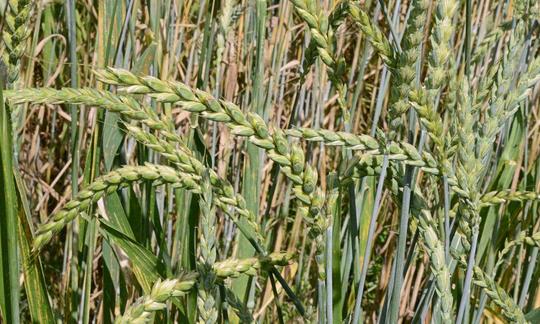

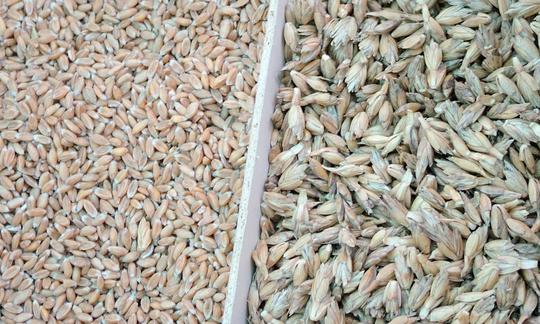

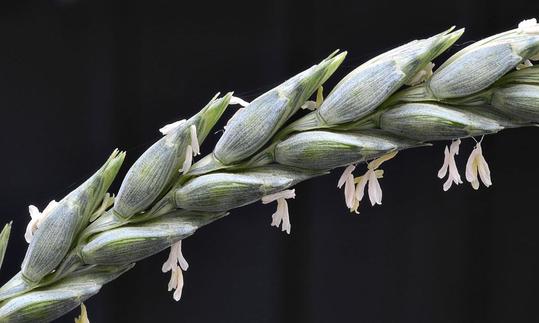

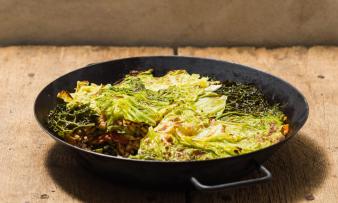
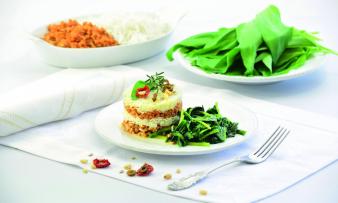
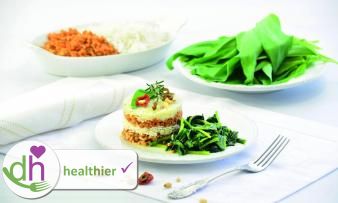

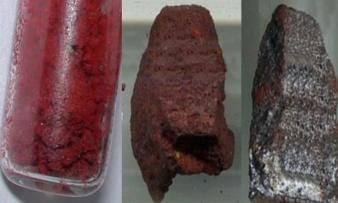



Comments